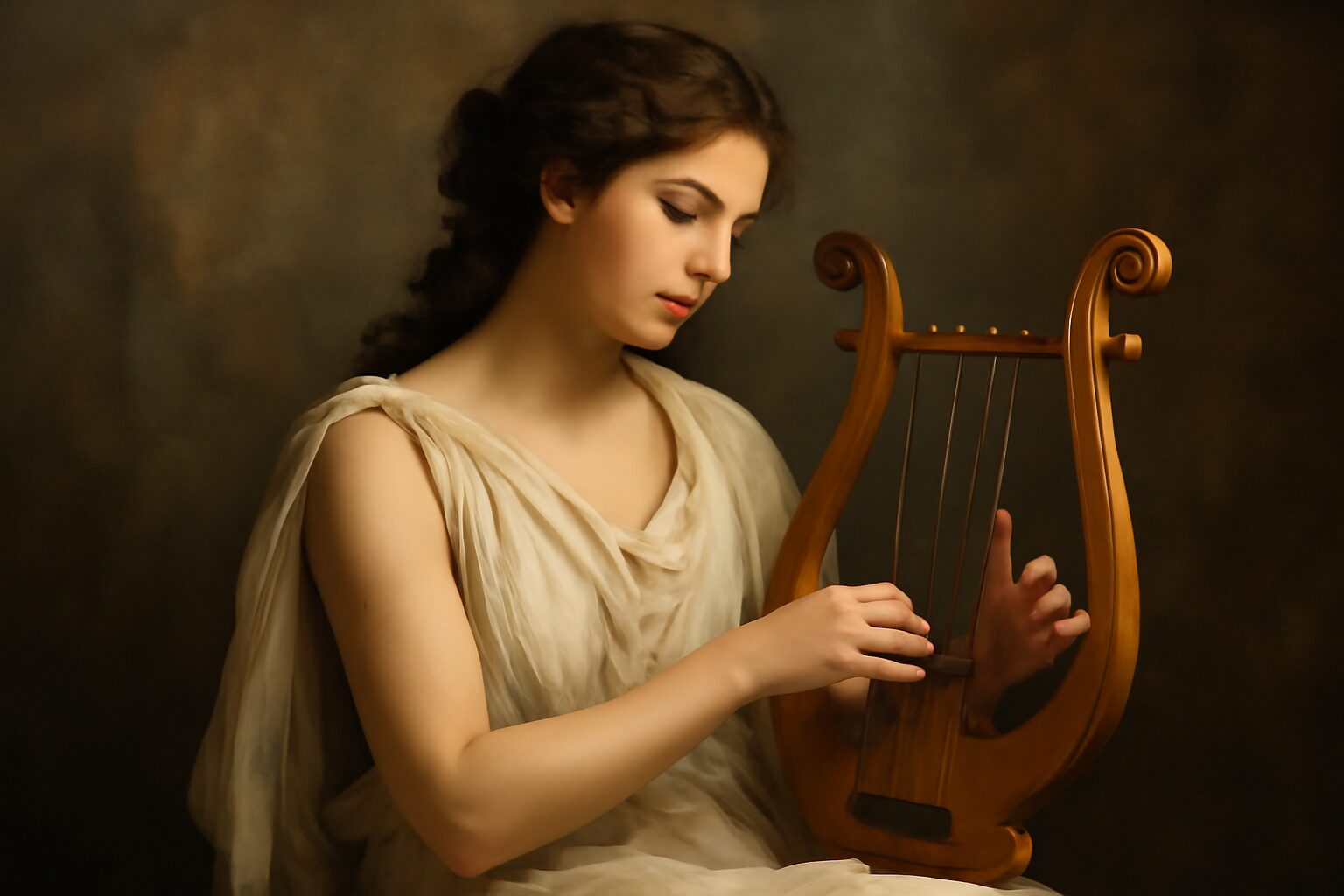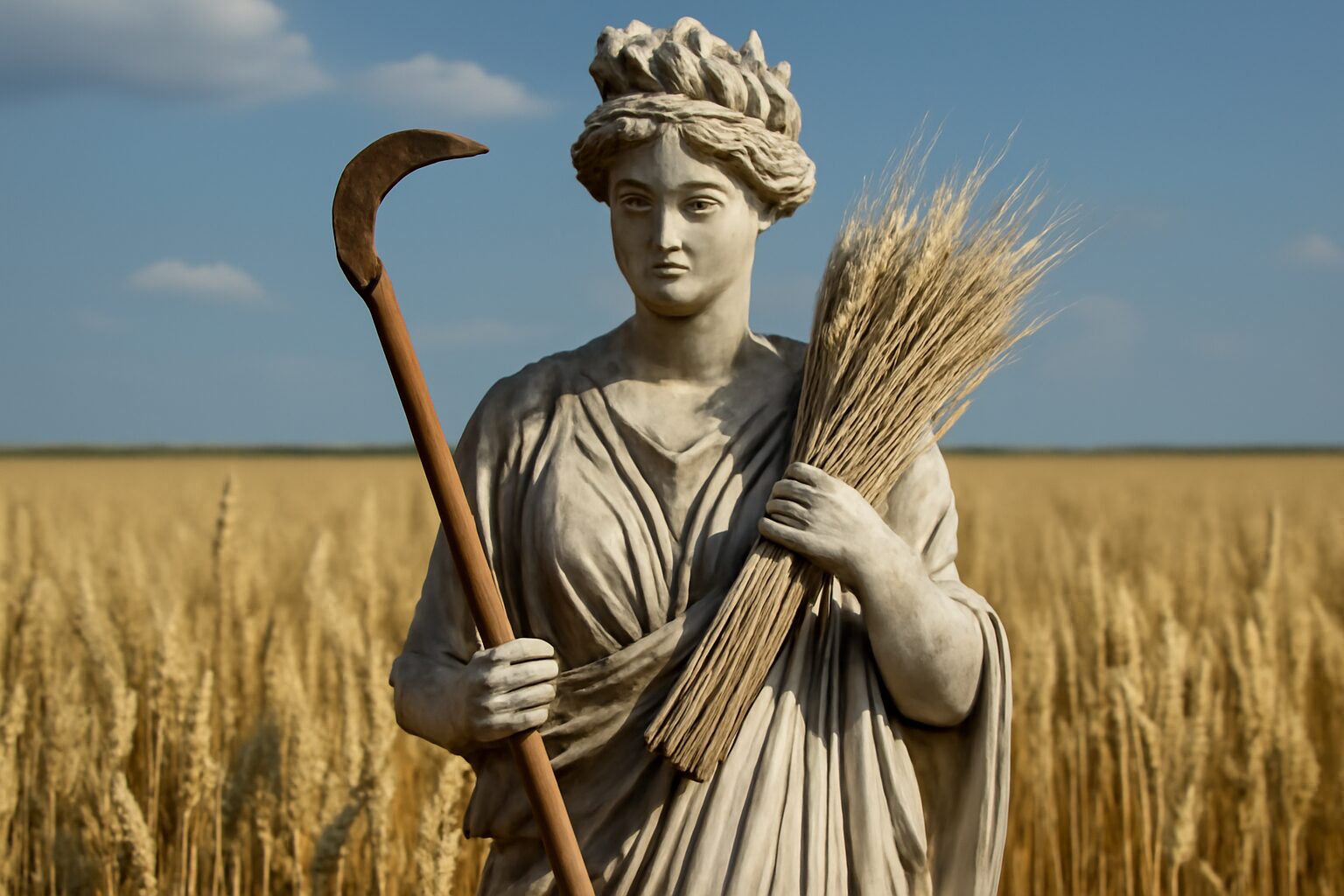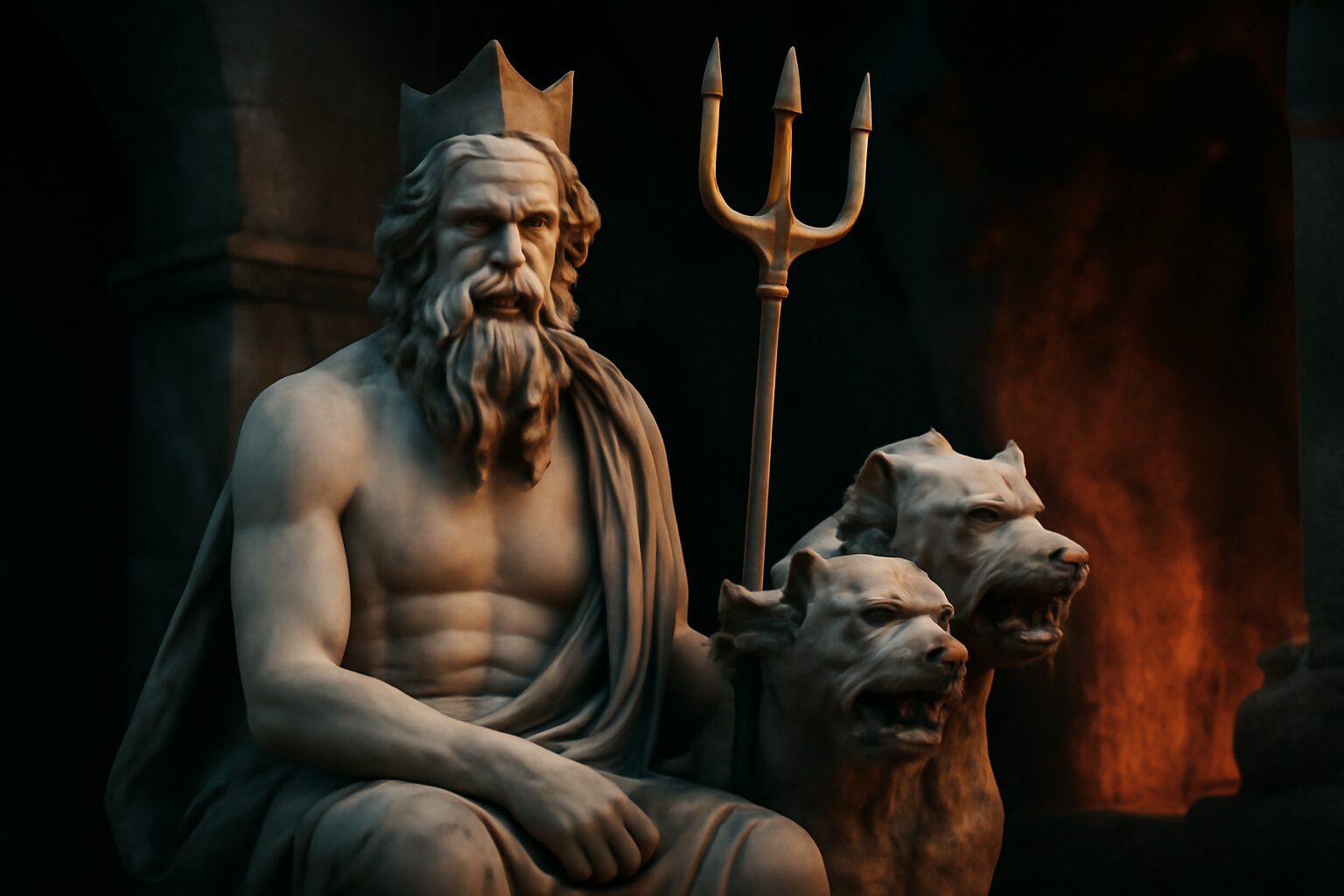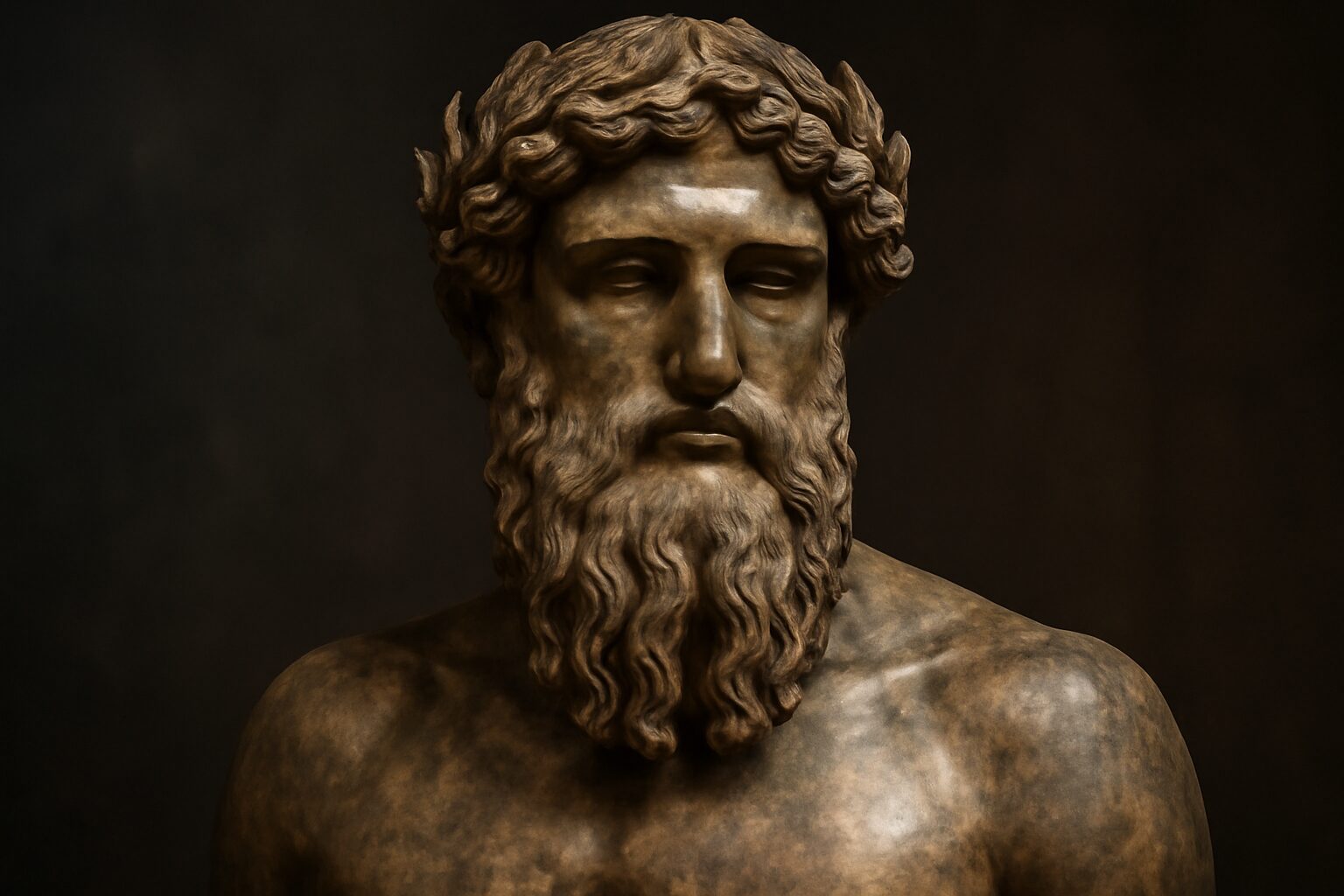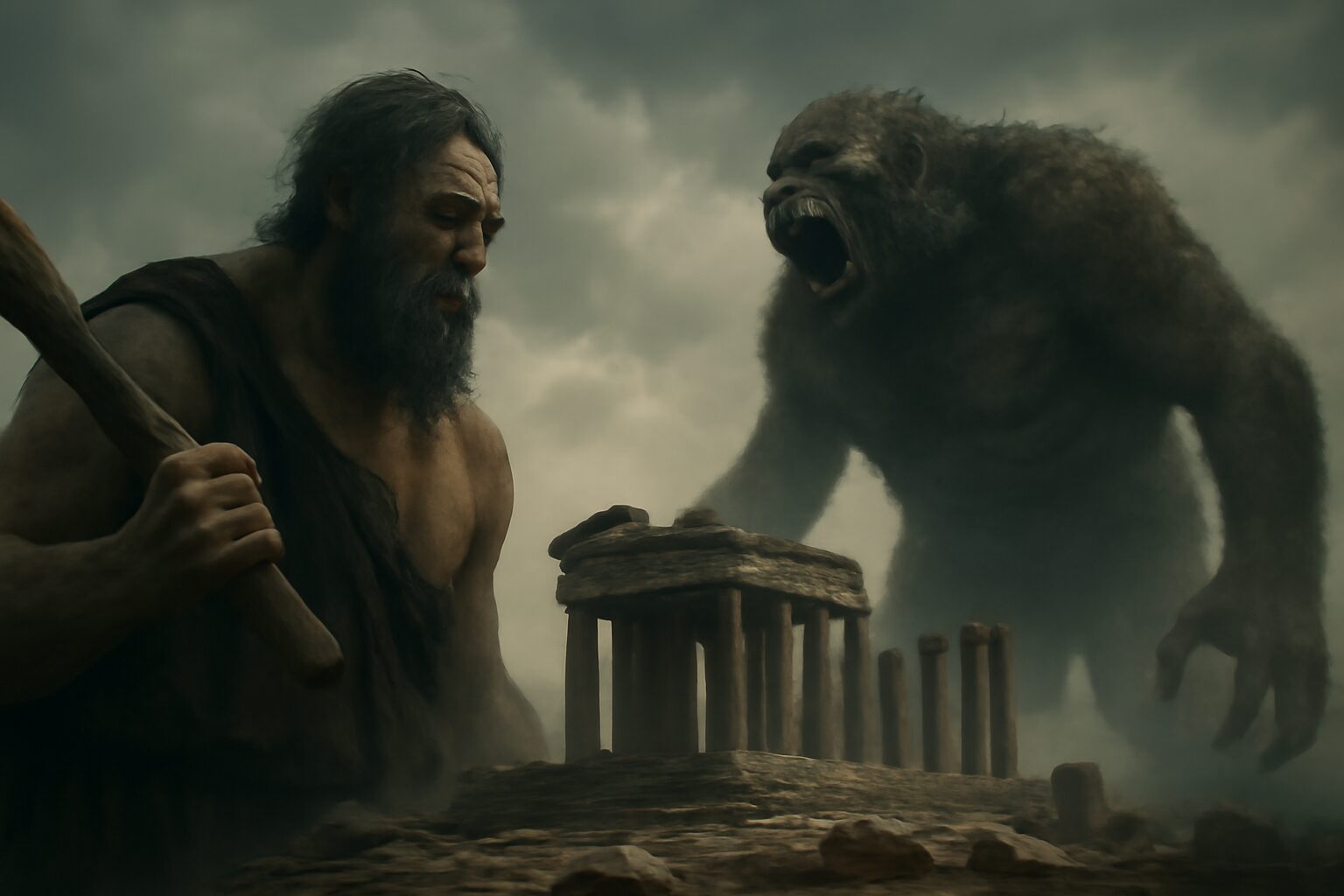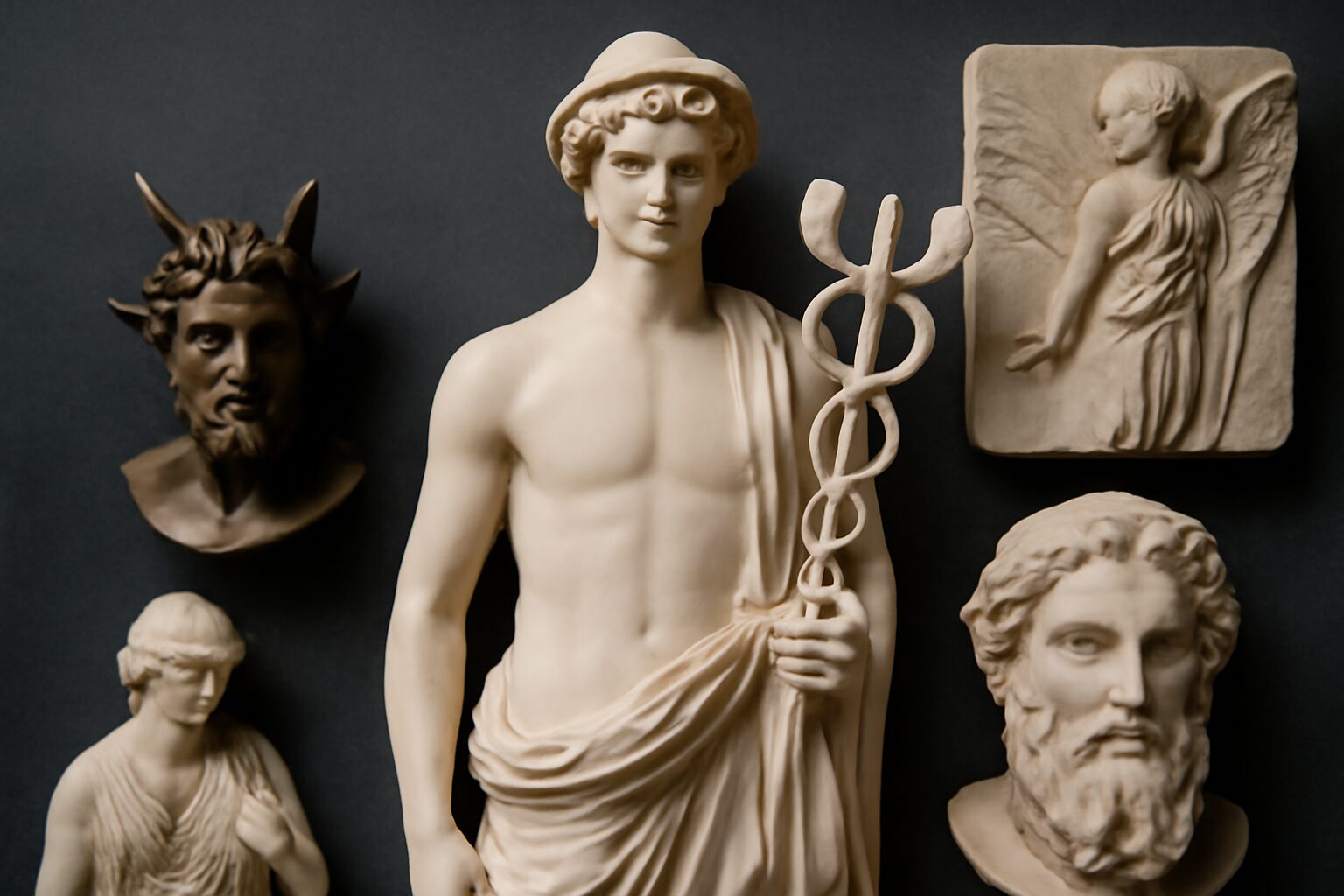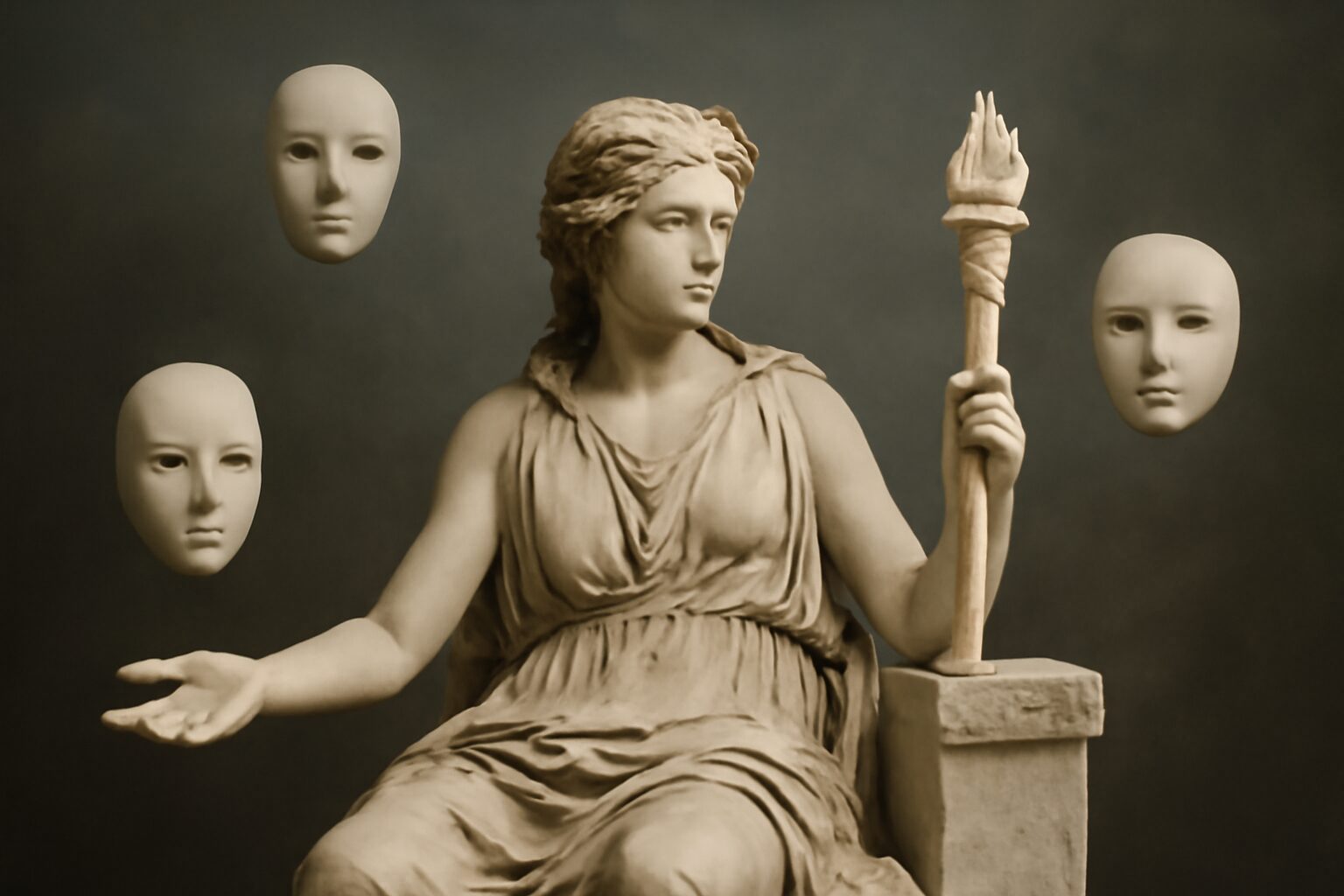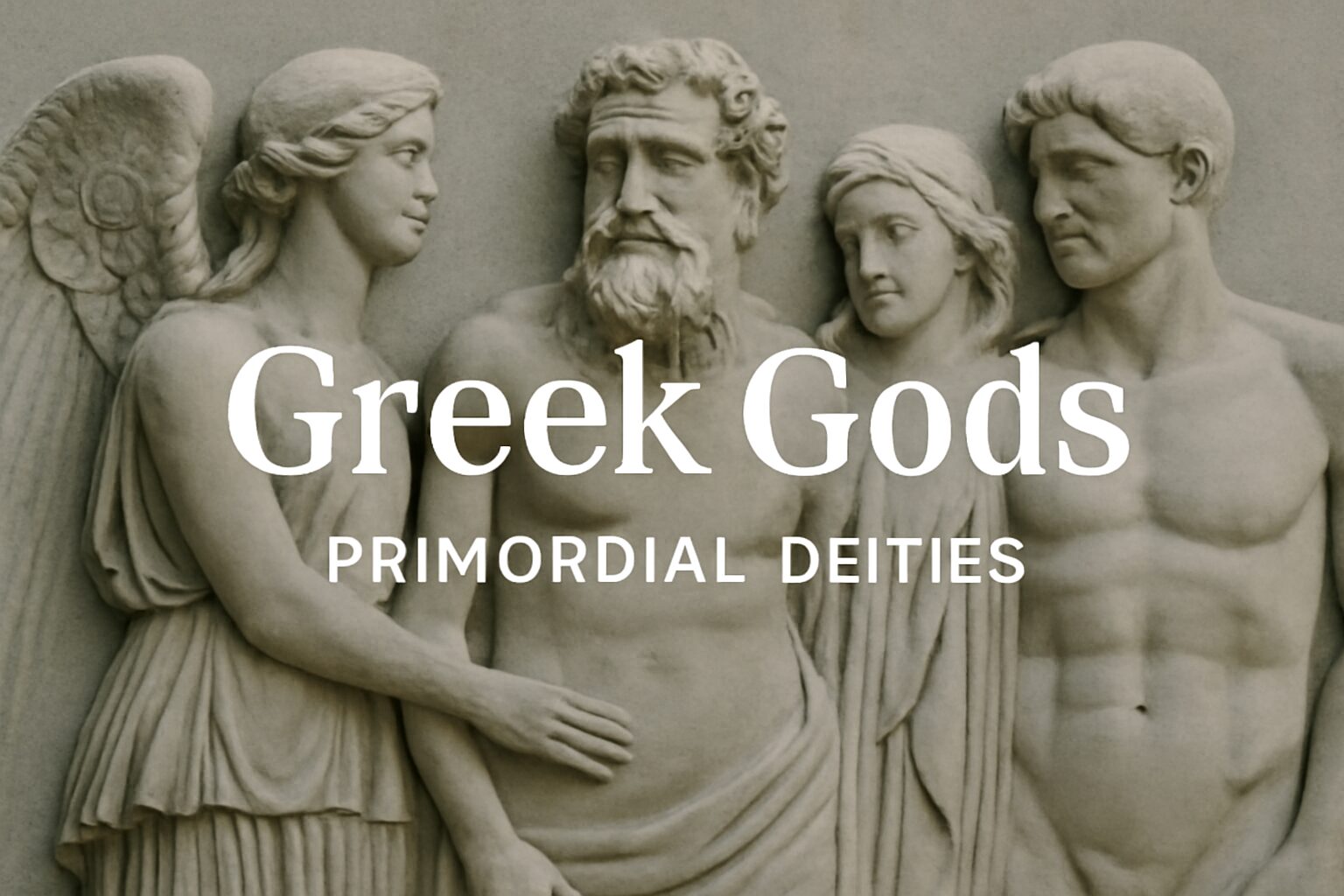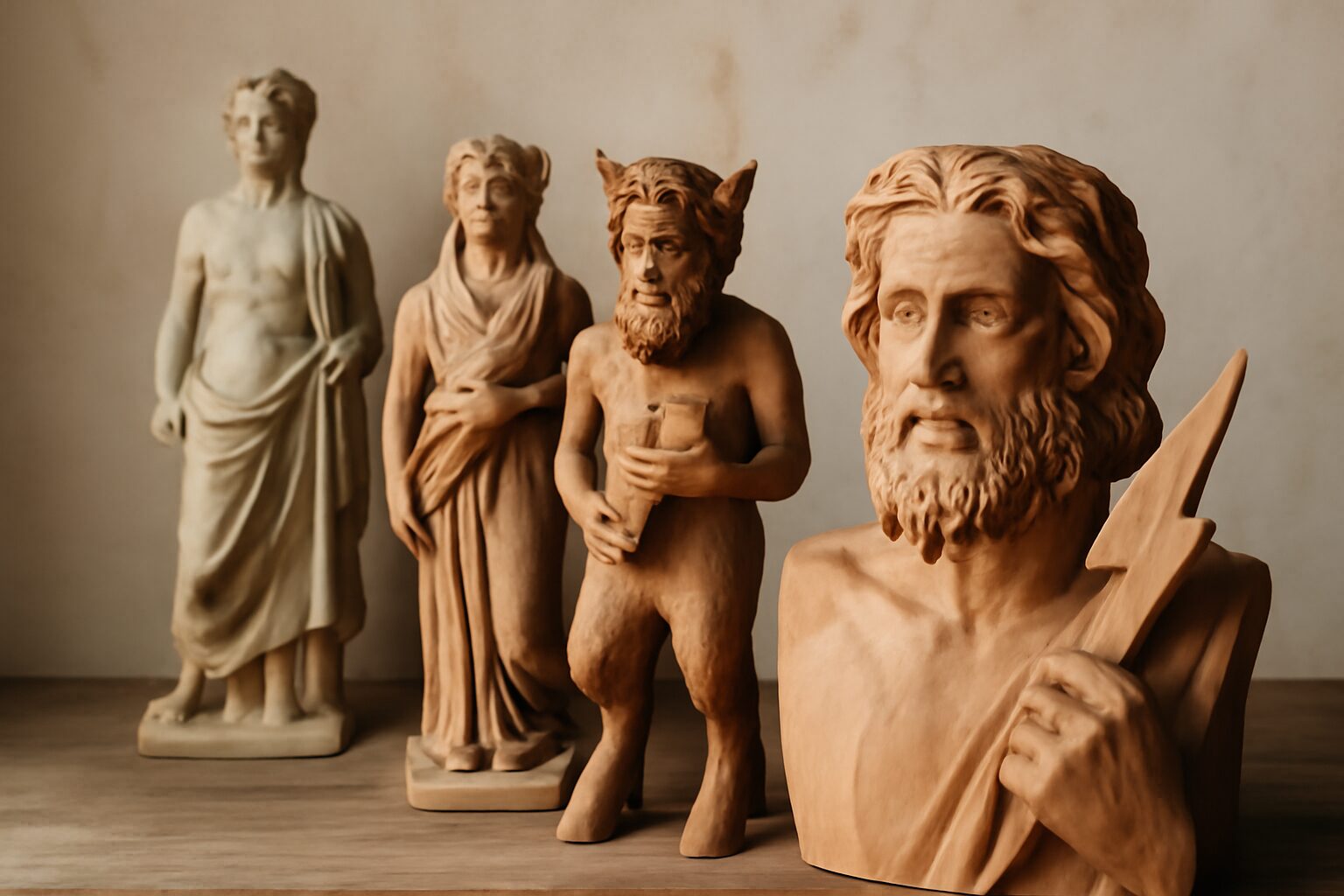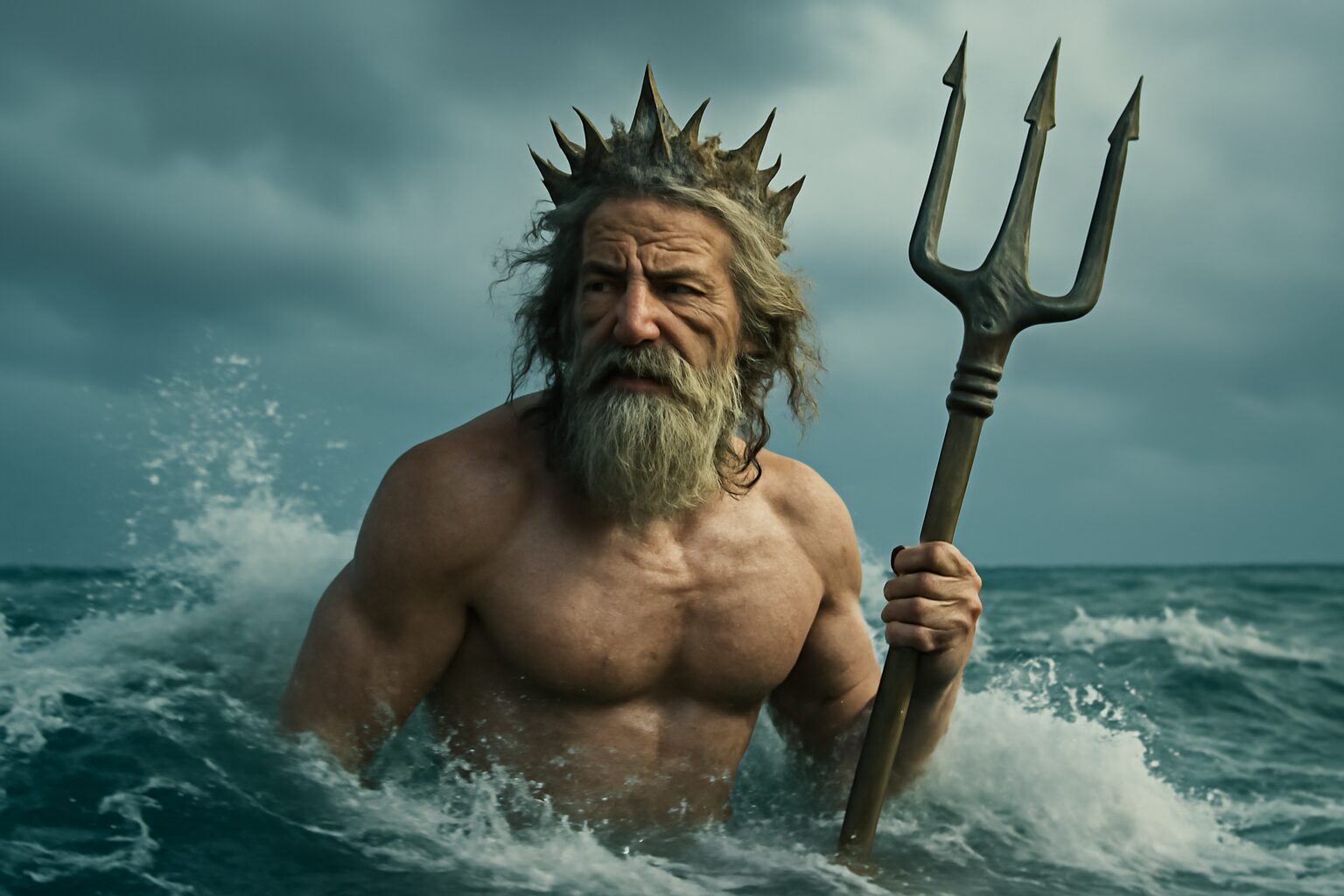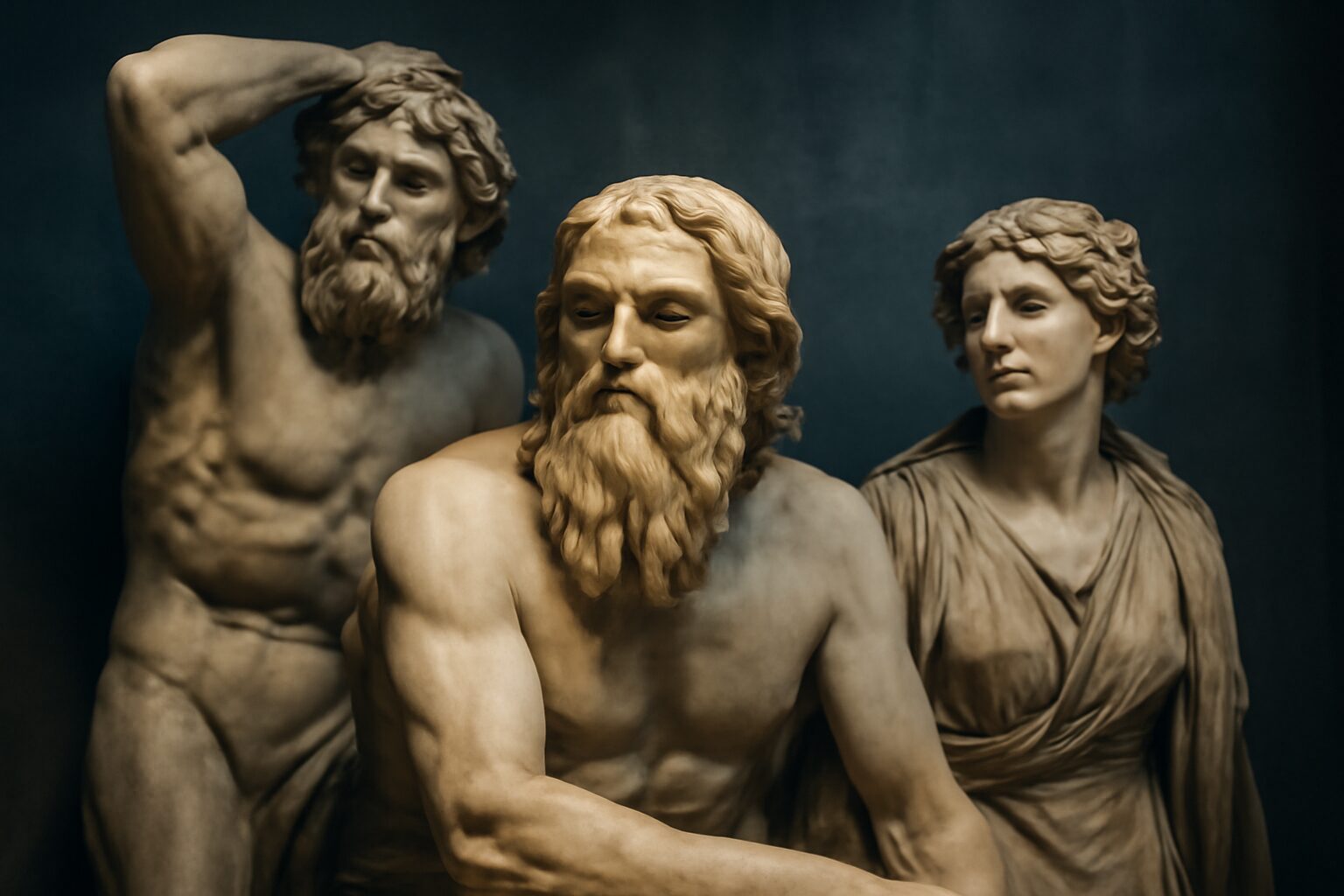Terpsichore: The Muse of Dance and Choral Song
In Greek mythology, Terpsichore is one of the nine Muses, the divine daughters of Zeus and Mnemosyne (the goddess of memory). Her name means "delight in dancing", and she is the Muse most closely associated with dance, choral singing, and lyrical poetry. Often depicted holding a lyre or a plectrum, Terpsichore embodies the grace and rhythm of movement, inspiring artists and performers throughout the ages.
Role and Symbolism
Terpsichore presided over the art of dance, particularly choral performances that combined music, poetry, and synchronized movement. In ancient Greece, dance was not merely entertainment—it was a sacred act, often performed in religious rituals, festivals, and theatrical productions. Terpsichore’s influence extended to both the physical and spiritual aspects of dance, symbolizing harmony, discipline, and the joyous expression of the human spirit.
She was also linked to the dithyramb, a form of choral hymn dedicated to Dionysus, the god of wine and ecstasy. This connection highlights her role in blending structured artistry with divine inspiration.
Mythology and Relationships
As one of the nine Muses, Terpsichore resided on Mount Helicon or Mount Parnassus, where she and her sisters entertained the gods with their arts. Some myths suggest she was the mother of the Sirens by the river god Achelous, though interpretations vary. The Sirens, known for their enchanting voices, inherited their mother’s musical talents—though they used them for more treacherous purposes.
Terpsichore’s siblings included other Muses like Calliope (epic poetry), Clio (history), and Thalia (comedy), each governing a different domain of the arts and sciences. Together, they served as the ultimate sources of creative inspiration for mortals.
Legacy and Influence
Terpsichore’s legacy endures in modern language—the word "terpsichorean" refers to anything related to dance. Her image frequently appears in classical and Renaissance art, symbolizing the elegance of movement. Ballet and other dance traditions often invoke her spirit, celebrating the union of music and motion she embodies.
Unlike many Greek deities associated with war or power, Terpsichore represents the beauty of human creativity. She reminds us that dance is not just steps and rhythm—it’s a divine gift, a way to connect with the gods and express the soul’s deepest emotions.
Alternative Names for Terpsichore
God Name: Terpsichore (Roman)
In Roman mythology, Terpsichore retains her Greek name, as she was directly adopted from Greek culture without a name change. She is the muse of dance and choral song, just as in Greek mythology.
God Name: Kharites (Greek (Epithet))
Terpsichore is sometimes associated with the Kharites (Graces), particularly in contexts where her role overlaps with the personification of grace and beauty in dance. This is more of an association than a direct alternative name.
God Name: Enoplios (Greek (Cult Title))
In some local cults, Terpsichore was worshipped under the title 'Enoplios,' meaning 'armed,' possibly linking her to martial dances or rituals. This is a rare and region-specific epithet.
Tales about Terpsichore
The Dance of Healing: Terpsichore and Aceso
In the tranquil groves of Aceso, goddess of the healing process, Terpsichore once visited to soothe the weary spirits of convalescents. Aceso, known for her gentle touch in mending wounds, found that while bodies healed, minds often lingered in sorrow. Terpsichore, moved by compassion, began to teach the art of dance to those recovering. With each graceful movement, she wove joy into their hearts, and Aceso observed how rhythm and motion accelerated not just physical healing, but spiritual renewal. Together, they created a sanctuary where melody met medicine, and to this day, it is said that dance can be a balm for the soul, a legacy of their divine collaboration.
The Colors of Their Harmony
- Aceso's aura: Pale green, symbolizing growth and recovery
- Terpsichore's light: Golden, representing joy and artistic inspiration
Rhythms of the River: Terpsichore and Achelous
Along the banks of the mighty river Achelous, Terpsichore was inspired by the constant, flowing motion of the waters. Achelous, the shape-shifting river god, often took the form of a bull or a serpent, his currents both life-giving and wild. Terpsichore, fascinated by his ever-changing nature, composed a dance that mirrored the river's twists and turns. She taught the nymphs and mortals how to move with the fluidity of water, and in return, Achelous blessed her dances with his power, ensuring that those who danced by his banks would find strength and adaptability in their steps. Their partnership reminds us that dance, like a river, is both powerful and graceful.
Elements of Their Dance
- Fluid Movements: Inspired by Achelous's currents
- Dynamic Rhythms: Echoing the river's unpredictable flow
Frequently Asked Questions
Who is Terpsichore in Greek mythology?
Terpsichore is one of the nine Muses in Greek mythology, specifically the Muse of dance and choral song. She is often depicted holding a lyre and is associated with the joy of dancing and musical performance.
Why is Terpsichore important in Greek mythology?
Terpsichore is important because she represents the cultural and artistic significance of dance and music in ancient Greece. As a Muse, she inspired artists, poets, and dancers, symbolizing the divine connection between the arts and the gods.
What can we learn from Terpsichore today?
Terpsichore teaches us the value of dance and music as forms of expression and joy. Her legacy reminds us of the enduring power of the arts to inspire, unite, and bring happiness to people across cultures and time periods.
How is Terpsichore usually depicted in art?
Terpsichore is typically depicted as a graceful woman holding a lyre, an ancient stringed instrument, and sometimes wearing a laurel wreath. She is often shown in flowing robes, symbolizing movement and dance.
Are there any modern references to Terpsichore?
Yes, Terpsichore's influence can be seen in modern terms like 'terpsichorean,' which relates to dance. Her name and legacy continue to inspire dance schools, performances, and artistic works that celebrate movement and music.

